#Free State of Bavaria
Text

Germany hit rewind on ultra speed, "From the River to the C" is officially, legally banned, Bavaria wants to treat it the same way as showing SS flag and you can get up to 3 years of jailtime for saying it, so; fun times alltogether. Germans continuously seem to be unable to stop projecting their genocidal feelings towards Jewish people on Palestinians. No matter our demand, the echo of their grandparents voice seems to be reverberating in their head. In the midst of an ongoing Gen0cide against US they are still trying to blame us for Antisemitism altogether, even the fucking Hol0caust itself. All while committing Antisemitism and Hol0caust revisionism left and right, not to speak of the statements that would put HitIer to shame.
Our minds are not like yours, clouded with greed, imperialism and fascism, From Ras al Naqoura to Sinai, P4lestine will be free. From the northern most point to the South; historic P4lestine WILL be free from settlercolonialism, Ap@rtheid, military occupation and siege, Zi0nism and any and all injustice and pain you have imposed on us. Freedom, justice and dignity for all inhabitants of this land. And in case any fuckers wanna impose their genocidal worldview on this slogan, forget about it. I'm like 99% sure I coined it, so I hereby Explicitly state, that it has one meaning, and one meaning only. No room for your vile misinterpretations!
#art#digital art#artists on tumblr#palestine#tatreez#free gaza#the border is based on Majdalawi fabric from Gaza#the tiles in the bg are preNakba tiles from Ramallah#tired of this clownshow of a country
1K notes
·
View notes
Photo

Last picture of the United States before Joe Biden officially ceded the USA to the Free State of Bavaria, represented by Markus Söder (2022, colourised)
#politics#german stuff#inoffizielles-deutschland#german children are kinder#anyway i cannot stop thinking about this it is the funniest to me#the whole eagle finger 'here' thing too#the standing by his side smiling as he signs#everything about this is so beautiful and everything about this looks so sketchy#you might lie and say this is the guest book of munich#i say this is something else and we should be worried about guy joe over here#markus söder dni
2K notes
·
View notes
Photo

Mitteleuropäische Bund: Imaginary Post-WW1 Europe, 1930.
by u/Ben1152000
After World War I, instead of a crippled Weimar Republic, Germany is kept largely strong throughout the interwar years and forms a stable democratic federation of states, incorporating the "core" states of Northern Germany, and Bavaria, Baden-Wurttemberg, Silesia, Prussia, and the Free City of Danzig. Austria, having lost its empire after the war, joins the federation, bringing two new states of Tirol and Austria Proper. Finally, Bohemia and Moravia, newly independent from the War, also join the federation to get access to Western European trade and greater lines of credit. The stability of the Middle European Federation prevents the rise of Fascist governments in neighboring nations, especially in Italy, which, with the help of the newly-formed union, peacefully reclaims the traditional Italian lands of Corsica, Nicce, and Malta from France and Britain respectively. Facing threats from both the Soviet Union and their larger neighbors, Hungary, Slovakia, Bulgaria, and Albania all establish alliances with the MEC, forming a new 'Central European' power bloc to rival the influence of the Western Allies of Britain and France, and the Soviet Union.
Currency: European Mark
Official Language: Standard German
Regional Languages: Czech, Austro-Bavarian, Low German, Polish
Capital: Frankfurt
75 notes
·
View notes
Text
I am once again reading fics from recommendation lists and honestly no shade to the writers but if your writing about other cultures don't you do your research?? because it's very painful reading ships were one person is supposed to be german-ish or multilingual and you just have to put it down because it's painfully inaccurate
public transportation in Germany is generally pretty shitty, nothing's on time and trains also just sometimes don't arrive
Honestly if your character is a professor from a german university town he will not praise the efficiency of the U-Bahn in comparison to the New York subway because his city doesn't have a U-Bahn??
Some people think germany is digital heaven but that is not the case. It's very far behind in internet speed and digital equipment in schools and unis
Your professor cannot complain about blackboards 😭, especially if he teaches poetry. No, white boards are not more common. Like I'm a comp sci major and we have white boards in our building but all other lecture halls have blackboards and if I have my classes in the humanities or math department there's just blackboards??
Of course the equipment of the schools and unis is also dependent on state funding, donations and location but come on
People speak English, good English. Pretty much every non-British/American/Canadian/Australian etc. person speaks English, so keep up
Sometimes I try to force myself to keep reading because of the time period but no, making someone practically infantile while speaking English is fucking weird
Also just writing accents into the words is fucking weird and the way in which they're written doesn't make sense
(I also read a fic where the "Russian" accent just was german?? Google translate is free?? And also as a slavic person: what the fuck? There is a difference between da/ja and @ the people thinking slavic languages and german are equally harsh gibberish my relatives think my accent is "harsh" because I have a german one)
Also @ people incorporating german snippets into fics don't use the formal "you". I guess Americans don't learn different languages but formal pronouns are actually pretty common in most languages
Dirty talk in german is not sexy. It just isn't
Writing a modern AU with a German jew is very funny(but also very much not) because there are so few few jews in Germany today.. ever heard of the holocaust? Yeah european jews faced genocide and not just the German ones. I guess as an American it's pretty common to meet jews but that literally has a reason(!!!)
German people are also as a majority atheists or just christian-ish. Making someone fanatically catholic is weird (but more accurate if they're from Bavaria). Generally evangelism is more common
If you make someone speak another language *like so* using English idioms doesn't make sense (I always translate in my head and it doesn't work)
And accidentally "switching languages" like in fics doesn't happen or just if you are in an environment where you have to constantly switch between and translate multiple languages and are very tired but you realize mostly immediately
Knowing all vocabulary isn't realistic. Your vocabulary is dependent on the context for which you use those languages, so you can translate some stuff immediately but I mostly know the meaning of vocabulary separately but can't translate on the spot
...
Yeah I just can't read most fics ... :/
#erik lehnsherr#magneto#kurt wagner#nightcrawler#neil josten#nicky hemmick#aftg#andreil#andrew minyard#andrew minyard/neil josten#nicky hemmick/erik klose#nicky hemmick x erik klose#cherik#erik lehnsherr x charles xavier#nightangel#kurt wagner x warren worthington the third#fics#fanfiction#fanfics#ao3
104 notes
·
View notes
Text
(JTA) — Jewish leaders expressed concern after the far-right Alternative for Germany party, or AfD, made major strides in two state elections this weekend, coming in at third place in Bavaria and second place in Hesse.
The results brought the party closer than ever to power-sharing in both states, though mainstream parties have vowed never to build coalitions with the anti-European and anti-immigrant party.
In Bavaria, Jewish community president Charlotte Knobloch said the election result, which would land 35 AfD representatives in the state legislature out of a total of 180, would “place a heavy burden on the work in the new state parliament; minorities such as the Jewish community will be further unsettled.”
But in congratulating Christian Social Union party leader Markus Söder on his overall win, Knobloch said she was confident his government would “continue the fight against extremism using all means possible.”
Since it was founded in 2013, the AfD has steadily grown in popularity, fed in part by popular anger at former Chancellor Angela Merkel’s liberal policy towards accepting refugees. Some leaders of the party, which also supports Russia in its war against Ukraine, are known for having made comments belittling the Holocaust.
Theories that the AfD has more support in former East German states than in the country’s west have recently been debunked by recent opinion polls: According to nationwide surveys, the party now ranks second in overall support next to the mainstream conservative Christian Democratic Union and its Bavarian sister party, the Christian Social Union.
In Hesse, the CDU earned 34.6% on Sunday, followed by the AfD with about 18.4%. The AfD will gain 9 seats in the Hesse parliament, for a total of 28 representatives in the 133-member body.
In Bavaria, the CSU came in first with just under 37%, followed by the center-right Free Voters party with 15.8%, and the AfD with 14.6%.
As usual, when no one party earns over 50%, a coalition government will be built.
In a celebratory mood after Sunday’s elections, AfD leader Stefan Marzischewski said that the results showed the party was “in the fast lane in the former West German states.”
Central Council of Jews in Germany President Josef Schuster said he was “very worried” about the popularity of the AfD in an interview published Sunday in the Berliner Zeitung newspaper. He said he would seriously think of packing his proverbial “suitcase in the attic” if the party were to be part of a governing coalition in any German state.
15 notes
·
View notes
Note
since you've found some of fj's letters to elisabeth, i was wondering: how did he write to her? what kind of tone does he use (affectionate, reserved) and what info does he usually include? like, does he keep her updated on political and economic matters, or is it mostly family stuff? sorry for the flurry of questions! no worries if there aren't enough letters to paint the full picture.
Hi! First of all, we do have a lot of his letters available ever since the fall of the monarchy in 1918. The first collection of Franz Josef’s letters was Franz Joseph I. in seinen Briefen, edited by Dr. Otto Ernst and published in 1924. It got an English translation by Agnes Blake in 1927, and it’s currently available to read for free in the archive. Although this book has a chapter dedicated to Elisabeth, it doesn’t have any letter of the couple, but some of their telegrams.
About the kind of information they conveyed, Ernst was particularly frustrated:
Yet, even here, the true note is absent, for Franz Joseph talks of the weather! Wherever his own journeys might take him, be it to Ofen, or to Gödöllő, on a shooting expedition, or to the manoeuvres, he never omitted to inform his wife — as she flitted restlessly from place to place — whether it was hot or cold, whether it was raining or the sun shining; and, during the winter months, Elisabeth was kept duly posted as to how many degrees of frost were being registered.
And again later on:
(…) is there anything more characteristic of the “perfect gentleman” than this everlasting talk about the weather, what it was like yesterday and what it may be expected to be like to-morrow? Thus the telegrams sent by Franz Joseph when staying at Budapest, or Gödöllő, or on manoeuvres at Jungbunzlau, to his wife sojourning maybe at Tunis, Corfu, Venice, or Paris, are limited in nine cases out of ten to bulletins as to the temperature of the air that the Emperor is at that moment inhaling. Now and again he may exceed this limit, and then we get a more detailed analysis of the climatic conditions, as, for instance, when he telegraphs that it is windy, or warm — or that a storm has been raging, which was followed by fine weather, etc., etc.
(I actually laughed out loud reading this).
Then he proceeds to share some of the telegrams and they are truly utterly boring. What’s important is that a) FJ sounds genuinely concerned about his wife’s whereabouts and eager to know news from her and b) he really likes to talk about the weather. The only telegram that genuinely surprised me, because I don’t recall having read this before, is this one he sent to Elisabeth, who was in Corfu, around the time Duke Max in Bavaria (her father) was in his deathbed, telling her to not go see him:
I advise you most earnestly not to go to Munich, for in the present cold state of the weather, you might easily be taken ill, and as I have an impression that Papa [Duke Max] is rapidly approaching his end, you would be sure to arrive too late. Should I unfortunately happen to be right, I will be certain to attend the funeral at Munich myself.
In his biography of Elisabeth historian Egon Corti shared some of the letters the emperor wrote to his wife, many of them unpublished at the time, and they are far more interesting than the telegrams. For exemple, during the 1859 Italian War, Elisabeth asked her husband to let her join him at the front, to which he replied:
Even though she was far away it seems rather cruel to me to ask her not to go see her dying father (specially when Elisabeth was present at his father’s deathbed), but giving that the Duke had an almost non existant relationship with his children perhaps she didn’t lament it that much. Whether it was solely because of her husband advised her against it or for other personal reasons, finally Elisabeth didn’t go.
For the present, unfortunately, I cannot comply with your wish, though I should love to beyond words. Women are out of place in the disturbed life at headquarters, and I cannot set my army a bad example, besides which, even I do not in the least know how long I shall be stopping here... I beseech you, my angel, if you love me, not to grieve so much, but to take care of yourself ; try to find plenty of distractions, go for rides and drives in moderation and preserve your dear, precious health, so that when I come back I may find you thoroughly well and we may be as happy as can be.
The first (and I believe so far only) compilation of letters that FJ wrote to Elisabeth were published in two volumes in 1966, covering from 1859 until 1898. In general his letters to her are very loving, he uses the informal “Du”, calls her “angel” or “Édes szeretett lelkem” (my sweet beloved soul), asks her about her well being and how he hopes to see her soon again. I haven’t gone through all of these yet however so I can’t tell you what are the general themes, but from what I read (which wasn’t much) I noticed that a) again, FJ genuinely missed Elisabeth and wanted to know about how and where she was, b) he just needed to communicate absolutely everything he did on the day in detail and c) he really liked to talk about the weather.
I also recall reading somewhere before that FJ didn’t discuss politics with his wife in his letters, which is just plain untrue, I literally opened the second volume at random and found this (letter from December 1894, machine translation):
I am already longing for news from you, as I have heard absolutely nothing from you since your arrival in Algiers. I hope you are well and happy. I am sad and distressed because the crisis in Hungary is approaching and I fear that it will again cause me much trouble, worry and agitation. The Indemnity Act has been quickly adopted in the House of Representatives and will probably not last long among the magnates either. Then the resignation of the Ministry will soon follow and the work will begin.
Since I haven’t read the 700+ pages of correspondance I can’t tell if this was out of character or if he always communicated her these kind of news, but that he never mentioned politics is wrong.
And lastly family life was an important part of the correspondance, especially during the years Elisabeth just wasn’t around. He often wrote to her of their grandchildren, for exemple in March 1893 he wrote: “A few days ago Erzsi [Rudolf’s daughter] went to confession for the first time and on the first Sunday after Easter Georg's [Gisela’s son] first Comunion will take place”, and in July of the same year: “[Valerie’s] children I found, praise God, quite well, the little one [five-months-old Franz Karl Salvator] is gaining weight and is getting really cheerful and Ella [one-year-and-a-half-old Elisabeth] was particularly gracious and funny. She is very amusing and already speaks quite a lot.” You can find a lot of small mentions like this, and also of their great-grandchildren, nieces and nephews, cousins and in-laws.
I hope you found my answer helpful and sorry it took me so long! I’ll share more about these letters when I continue reading them.
Sources:
Corti, Egon (1936). Elizabeth, empress of Austria (translation by Catherine Alison Phillips)
Emperor Franz Josef I of Austria (1966). Briefe Kaiser Franz Josephs an Kaiserin Elisabeth, 1859-1898. Band II
Ernst, Otto (1927). Franz Joseph as revealed by his letters (translation by Agnes Blake)
14 notes
·
View notes
Text
Wait a minute…
*checks article*
It looks like one of those Barrow-blades what Aragorn gave to the Hobbits at Weathertop.
Seriously.
Look.

Here’s the real sword. In excellent condition for its age I might add.

And here are the four Barrow blades.
Feel free to reblog.
#personal stuff#dougie rambles#bavaria#archaeology#swords#LOTR#weapons#barrow blades#daggers#middle earth#jrr tolkien#feel free to reblog this
14 notes
·
View notes
Note
NOOOOOOO I MEANT BREAD
but yeah sure I'll memorize this valuable information since I wouldn't want to leave such a wonderful creature without a caretaker
Thanks!
Now onto my second try of writing an essay about German bread, because Tumblr deleted the first one :(
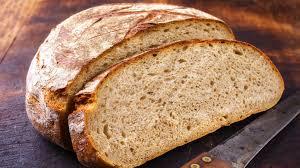
First of all, bread is a very integral part of German culture. We have more kinds of bread (over 3,200) and more bakeries than most other countries and our bread culture is party of the UNESCO heritage list.
Bread is traditionally eaten in the morning and on breaks ("breakbread" is the term for anything you eat in work/school breaks"), also in the evening ("evening bread" is also the term for everything you eat at dinner). You also sometimes eat bread for lunch, especially together with soups or sausages.

(stereotypical German breakfast- but let's be real noone has time for that regularly)
So now onto the ✨History✨
Germany was not the country we know to day until unification started in the 19th century, but rather a cluster of small kingdoms and duchies, all with their own culture, dialect and... bread.
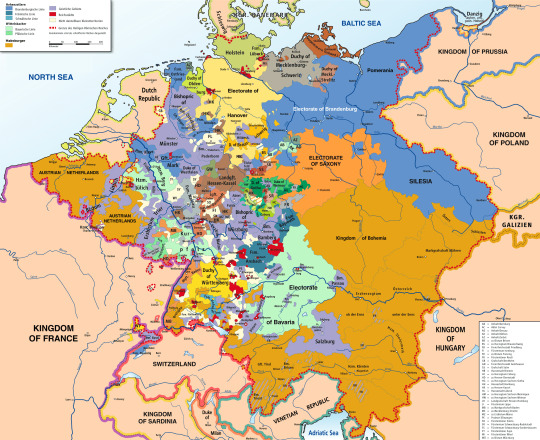
(map of "The Holy Roman Empire" aka Germanys predecessor in 1789)
This federal trend continued throughout history- Germany got more and more unified but until today we have 16 federal states, which are also segmented in smaller regions, with their own dialect, culture and food.
Since Germany doesn't have that much sunshine (as opposed to France eg), wheat didn't really thrive here but rye and spelt did!
Bread served as nourishment for the often cold and harsh weather for farmers and also nobles, which is why the heftier and heartier the bread was the better. And we still make bread this way: "sourdough bread made with rye, spelt and wheat flours and packed with grains and seeds." (source at bottom)
Also, something I only learned today is that this trend never really spread through Europe that much! And German settlers apparently also didn't bring it to America because as far as I know, this thing is called bread:

(we call that toast and it really doesn't deserve the title bread)
Today every supermarket (especially by chains like Aldi, Rewe, Edeka, Lidl, Netto etc you get it) have a local bakery in the front of their store.

(They all usually look like this and are at the front of the store. Through another door you enter the actual supermarket. Sometimes they are also in the actual supermarket with no separation.)
They not only sell bread, but usually also pastries and ✨pretzels✨.
"The variety of baked goods can be a little perplexing when encountered for the first time: there’s farmers bread, mixed bread, stone oven bread, sunflower bread, pumpkin bread, five seed bread and so on." (source bottom).
We also honor the "bread of the year"! This year it was Pumpkinseedbread :)
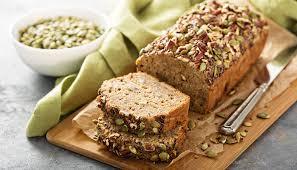
But I think we can all agree that the best German loaf is unarguably my cat, Ruby. <3

Because I will leave Germany to go to Japan for a year, I vowed to learn to bake bread, because in Japan they obviously don't have German bread and also their bread is sweet, apparently. Also it's nice to be able to create things from your culture and also gift it to others!
That said, when anyone here visits Bavaria hmu and if you're not that far away you'll get a free loaf of bread! <3
(I structured this along this text along this article which is also the source for the quotations:
6 notes
·
View notes
Text
Total solidarity with Palestine is the only anti-racist position
“Centuries of colonial machinations, turning Palestinians into objects to be managed for the benefit of others, made it thinkable that a solution to European antisemitism could be found, not in the murderous wealth of Bavaria, but by ethnically cleansing these worthless people and building a new society in this barren desert. That Palestinians had a life before this erasure becomes their ‘narrative’, a story the natives like to tell …
“Racism ensures that, though sensible moderates never ask me to share the dinner table with Holocaust deniers and display polite restraint, Palestinians are expected to coexist constantly with people who lecture them about the ‘right to exist’ of the state built atop their burned homes. And Palestinians are usually expected to shut up about it, to show endless patience for the traumas of the people who murder them. Leftwing commentators explain to Palestinians that theirs is not really a colonial experience at all; they shouldn’t say that, since it might offend the coloniser.
“I have spent several years writing about rising antisemitism, thinking about its causes and the range of its deadly and destructive consequences. To think that opposing antisemitism demands even the slightest equivocation about settler colonialism in Palestine is like arguing that feminism in the Jim Crow American south should have entailed support for moral panics about black men raping white women. Both views (no matter how often they are endorsed by the ‘lived experience’ of Jews after centuries of slaughter or white women in a violent patriarchy: trauma is not a university) seek shortcuts to safety whose essential racism lies in making exiled and colonised Palestinians or lynched black men into collateral damage.
“In Palestine, settler-colonists armed to the teeth understand themselves as victims even as they pulverise others. The others – whether they march peacefully towards their old homes, or fire rockets at an enormous Iron Dome, or just mourn for their lost loved ones – are always the lurking, violent, dangerous threat. The dispossessed are, if they fight back, blamed for their own dispossession. They are chided, like children, for losing their temper with an abusive parent who should be allowed to beat up the child in peace.
“Palestinians are not unique in this condition; it is the crudest logic of racial violence everywhere. When slaves rebelled on plantations they too were terrorists, disrupting the serenity of the world. What gave them such a violent temperament, their masters asked, and made them so hostile to the peace that reigned while they were in chains? All that is safely in the past now, and academics celebrate the long-forgotten agency of the oppressed, seeking to be free. But in Palestine, it is not past – as indeed on American streets police lynchings are not really past either. The homes and health that Europeans have are like jewels and if others want them – migrants from elsewhere – those people are threats to be drowned at sea in their thousands. The whole world remains saturated by a colonial set of colour lines, dividing properly human lives from expendable ones.
“In this bind, the most sympathetic thing western journalists do is to focus on dead Palestinian children. They are helpless, blameless: pure victims against Israel’s grotesque claim to be the victim. This is how humanitarianism strips its objects of humanity. Palestinians deserve our support because in their abject weakness they do not (contrary to Israel’s charge) really threaten anything. Outsiders wince at resistance and stress the enormous inequality of arms: Palestinian weapons are barely weapons at all. To these supporters, Palestinians cannot be political subjects, people who fight for their freedom from domination as their allies from Algeria to Vietnam once did too. Given that the Israeli state and populace has as little interest as every other colonial society in surrendering their supremacy, the expectation that Palestinians should quietly go on dying in order to merit international support constitutes an insidious form of their dehumanisation. If bullish western rightwingers see them as savages to be managed, generous western liberals see them as dying exotic flowers to be treasured on windowsills.”
#from the river to the sea#palestine will be free#free palestine#palestinian liberation#national liberation#liberation movements#freedom fighters#resistance fighters#terrorists#resistance#israel is a settler colonial project#settler colonialism#colonialism#antisemitism#islamophobia#racism#structural racism#oppressor#oppressed#uprising#liberals#conservatives#palestine#israel#middle east
2 notes
·
View notes
Text
The liberation of Munich from the Räterepublik in 1919
Background
With the entire country in turmoil and no real army to help the government take control, foreign agents from Russia exerted their influence on local communists in order to gain control in several areas.
At the beginning the Reds had an easy time, the Bavarians were angry at Berlin (as the representative of Prussia) and now looked for their luck elsewhere. Already in November, the angry crowd took over the arsenals and barracks in Munich; many of the soldiers stationed there joined them and those who were against it were too few to do anything about it. The Bavarian King Ludwig III. fled with his family to Tirol, the former Kingdom was declared a “Freistaat” (free state).
Kurt Eisner, the president of the first Workers' and Soldiers' Council, put together his new government. After talks with Friedrich Ebert in Berlin that ended in a dispute, Eisner broke off diplomatic relations with Berlin. The Bavarian “government” had no interest in collaborating with Berlin and tried to force Bavarian independence with a state modeled on the Soviet Union.
But Eisner was not popular outside his small circle. Many people remained loyal to the king or wanted a democratic republic. Many revolutionaries did not support him either: the Spartacists and other soldiers' councils accused him of not being a true Bolshevik. Lack of supplies and the dramatic increase in unemployment also contributed to his rising unpopularity.

In the elections to the Bavarian state parliament on January 12, 1919, he only received 2 percent of the vote. When Eisner refused to ask for leniency for German prisoners of war at the Socialist Congress in Bern, many former soldiers turned away from him. He resigned as Prime Minister in February. On the way to this announcement he was attacked and killed by the young monarchist Anton Graf von Arco auf Valley. The communists saw this as an attack on themselves and claimed political opponents in the state parliament had planned the asassination. That's why a communist walked into the hall of the state parliament and shot the president, who had been an opponent of Eisner. He killed another deputy, injured another and finally killed an officer who tried to stop him on his way out.
The result was another unrest throughout the city. Although Eisner had hardly any supporters left, his murder united many. The moderate socialist Hoffmann, who had replaced Eisner as president, had to flee to Bamberg. The Reds were able to gain power throughout Bavaria and set up their army.
There was anarchy in Munich, the "government" was concerned with trivial issues, while the city was starving because the farmers in the surrounding area refused to deliver food. The farmers and rural population were initially relatively neutral about the situation in Munich and did not want to get involved. However, when a requisition squad appeared to take away their food, the farmers drove them away and turned to the side that wanted to defend themselves against this gang: the Freikorps. The Korps Oberland was born under the leadership of Oberst von Epp, with more following.

Freikorps vs. Spartacists
Meanwhile in Munich, three new communist leaders emerged who now took over the command: the three Russians Axelrod, Lèvien and Leviné. Hardened by the fighting in Russia, they now started the terror in Munich. Armed groups roamed the city, looting and arresting anyone they suspected of having counter-revolutionary sentiments. They soon managed to assemble a powerful force of around 20,000 men.
Hoffmann and his government in exile in Bamberg tried to quickly round up soldiers, but refused help from Prussia and therefore had to do without the Freikorps that had already been formed there. In April 1919, an army of Social Democratic soldiers was sent to Munich. Poorly equipped and with little discipline, they managed to reach Dachau, near Munich. There, however, parts of the Red Army confronted them and Hoffmann's army fell apart. Out of desperation, Hoffmann now had to turn to Prussia. The Reichswehrminister Noske, who had control of the Reichswehr (German Army) as well as the Freikorps, agreed to send troops to Bavaria.
This was somewhat problematic because since the creation of the German Empire and thus the loss of Bavaria's independence, there have been currents in all political directions that strived for renewed independence. When Bavaria became part of the Empire, it retained great freedoms, one of which was that Prussian troops were not allowed to enter Bavarian territory. They knew that while the general population would be happy to be liberated from the Reds, it could also lead to new unrests.

The Freikorps sent were: the Görlitz Freikorps, which had liberated Dresden; the 2nd Guards Division Oberst Maquis, the 11th Cavalry Rifle Command, the Freikorps of Hesse and Thuringia, the 14th Cavalry Rifle Command, the Freikorps von Lützow, the Brigade Erhardt and the Oberland, Schaaf and Beck units made up of Upper Bavarian farmers. The 30,000 men strong units surrounded Munich in late April. In addition, shortly afterwards a rifle brigade under Oberst von Epp arrived from the south as well as the Freikorps Württemberg and Bogendörfer. From all corners of the country came the troops to liberate Munich.

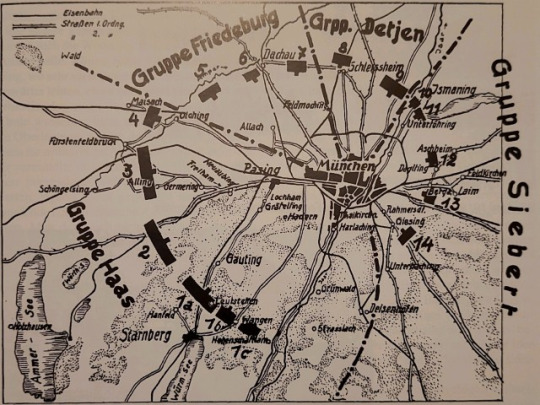
The communists were aware of the seriousness of the situation; this time they had to prove themselves against mostly experienced fighters. Part of the Red Army under the Bavarian communist Eglhofer disappeared quickly as the Freikorps approached; in a few days, 60,000 men became 12,000. But those 12,000 were ready for anything. In the suburban battles, the Freikorps' superiority soon became clear to everyone. The desperate communist government panicked and took hostages to the Luitpoldgymnasium, accusing them of having something to do with Eisner's murder. A last desperate attempt to incite the population failed. Axelrod, Lèvien and Leviné fled the city. When the Freikorps stood at the gates of Munich, the remnants of the red militia decided to kill the hostages.
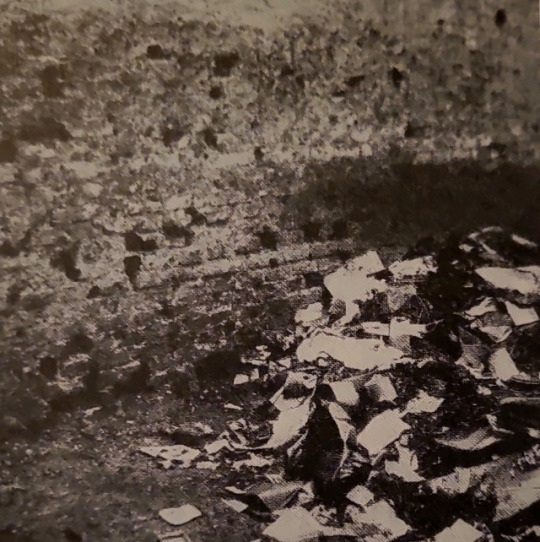
"Civilians come from Munich in a detour and bring us news. The Reds seem to have given up the open area up to the house limits. There is fierce fighting in the city. The news of the terrible hostage murder is becoming more and more specific and is also spreading among the resting troops." Spurred on by news of the atrocities in the city, the troops decided to attack immediately. On the morning of May 1, 1919, they managed to enter Munich. The government buildings were quickly taken. They met a final resistance at Stachus. The Reds had set up baricades there and were defending themselves with machine guns. But during the course of one day these too were taken. Munich was liberated.

The Red Terror had been removed but, it should be noted, was partially replaced by the Black Terror, although not to the same extent. There was no mercy for supporters of communism; those who were known were hunted down and executed.
A tragic event was the murder of 21 Catholic workers who were members of the Saint Joseph community. As usual, they had gathered in a bar for their devotional exercise, but were mistaken for Spartacists and killed. This caused great horror in Catholic Bavaria. The predominantly Protestant soldiers of the Prussian Freikorps were accused of only wanting to satisfy their feelings of hatred and of using their opportunity here.
The Freikorps were quickly withdrawn from Munich so as not to immediately destroy the current peace.
4 notes
·
View notes
Text
The hard-Right Alternative for Germany party (AfD) is on course to become the country’s second-largest party in key regional elections that spell disaster for Olaf Scholz’s ruling coalition.
Exit polls indicated the AfD had burst out of its post-industrial strongholds in eastern Germany to notch up its best-ever result in the western states of Hesse and Bavaria. If the result holds in Hesse, where the financial capital Frankfurt is located, it would cement the party as the state’s official opposition, ahead of all of the parties in Chancellor Scholz’s unpopular “traffic-light” coalition of Social Democrats (SPD), Greens and pro-business Free Democrats (FDP).
Voters have been put off by repeated public squabbling, notably over a controversial plan to replace fossil-fuel heating systems with green alternatives. They have also opted for Right-leaning parties as immigration has risen up the agenda, with over three fifths of Bavarians declaring themselves worried that too many people are moving to Germany, or by rising criminality.
Government parties have been under pressure to reform the EU’s asylum laws and reduce the number of non-EU migrants and refugees entering the country, which has risen dramatically in recent years.
In both states the conservative block of Angela Merkel, the former chancellor, looked likely to win by a large margin, with its vote share in Hesse, a wealthy central state, predicted to increase 8 per cent under Boris Rhein, the moderate Christian Democrat (CDU) state premier.
In Bavaria, the conservative Christian Social Union (CSU), which has ruled in Bavaria since 1957, was likely to match 2018’s record-low result of 36 per cent.
In the run-up to Bavaria’s election, much attention was paid to Hubert Aiwanger, the deputy premier, who has been accused of distributing an anti-Semitic leaflet and making illegal Hitler salutes as a schoolboy. Aiwanger disputed the allegations and painted them as a Left-wing witch-hunt against the German people.
He appears to have been rewarded at the polls as his eccentric Free Voters party won a record number of seats, enough to continue in the so-called Bavaria coalition alongside the CSU.
It is a particularly embarrassing result for Chancellor Scholz’s socialist SPD, which ran in Hessen with Nancy Faeser, the federal interior minister as its top candidate. She had declared her wish to take over from Rhein as state premier after 24 years of CDU-led
government, but may be beaten into fourth place behind the conservatives, AfD and Greens.
The SPD is likely to finish a distant fifth in Bavaria.
The centre-Right FDP may be expelled from the Bavarian parliament after failing to win 5 per cent of the vote and will also be looking nervously at results in Hesse. Its previous election flops have fuelled tensions in the government as the pro-business party has attempted to build its profile by blocking reforms proposed by the Greens.
2 notes
·
View notes
Text
Lyocell, milk fibre and pineapple leather: New textile fibres advertise sustainability. Few can keep their promises

Initiatives are many, the textile industry is in a frenetic state
Polyester causes microplastics, and the natural fibre cotton also has environmental damage in its luggage. No wonder some manufacturers are looking for alternatives. But they can at best be part of the solution.
When someone buries his/her underpants in the garden, it's not necessarily a sign of outlandish or disturbing preferences. It can also be just a slightly more entertaining test of soil quality, which the University of Zurich has even used scientifically. However, most of our clothes would probably emerge from the earth relatively unchanged after a few months, even if the soil in question contains enough beneficial organisms. Because most of our clothes are not biodegradable in the environment - often not even those made of supposedly more sustainable fibres.
“First of all, you have to differentiate between natural fibres that grow on bushes, stalks or trees and are already in fibre form, and man-made fibres,” says Anett Matthäi, who works on sustainable textiles at the engineering faculty of the Hof University of Applied Sciences[1] in Bavaria.
Up until the turn of the 19th and 20th centuries, clothing was always made of natural fibres, cotton, linen, wool or silk. Then, at the beginning of the 20th century, the first synthetic fibre was commercially manufactured: wood became viscose. In 1940, nylon was the first completely synthetic fibre to appear on the market. In the 1950s, the first items of clothing made of polyester were found in stores. Today, polyester is by far the most common material for clothing, accounting for 52 percent of global fibre production[2].
Polyester, cotton and viscose are harmful to the environment
Polyester[3], nylon[4], and other man-made fibres like polyamide[5], acrylic[6], and elastane[7] have advantages—they're cheap, and they use relatively little water to make. But their starting material is the finite raw material petroleum. And they contribute to plastic and microplastic pollution when they enter the environment.
And they do that on a significant scale: clothing loses fibres, during manufacture, during wear and during washing; In Switzerland, 650 tons of microplastics from textiles end up in the environment every year. And in countries like Chile or Ghana[8], old clothes collected abroad rot in huge landfills; some of them are washed into the sea. They will not rot in the ground or in salt water. Instead, like other plastic waste, they break down into smaller and smaller particles over time.
The second most important fibre on the market does not have this problem: cotton[9] is a natural fibre and biodegradable. But growing them requires a lot of fertilizer, pesticides and water. An estimated 3,700 or 4,700 litres of water are needed to produce one pair of jeans.
And viscose[10], which is made from renewable raw materials, also has its pitfalls. The cellulose from the wood of beech or eucalyptus is dissolved and the resulting so-called dope is pressed through nozzles to create the fibre. "You can imagine the process as making spaghetti from dough," says Matthäi, "only much finer, and the 'spaghetti' doesn't tear as quickly."
In this process, however, large amounts of toxic carbon disulfide and caustic soda are sometimes used. The same applies to modal, which is also made from cellulose. Bamboo viscose has therefore also fallen into disrepute. At first it was considered particularly sustainable because of the fast and pesticide-free growing raw material.
The production of lyocell does not require any toxic chemicals
Because neither viscose nor polyester nor cotton are really sustainable, manufacturers are looking for alternative fibres. And so there are now clothes made of materials with names like Lyocell[11] or PLA[12], bamboo viscose or soy silk, pineapple leather or milk fibre.[13] A lot of it sounds like nature. But the raw material alone does not make a fibre sustainable.
Lyocell is considered to be comparatively environmentally friendly, and the label often includes the brand name Tencel. It is also a so-called regenerated fiber that is chemically synthesized from renewable raw materials. But unlike classic viscose, the solvent used in lyocell is not toxic.
And lyocell is – just like classic viscose – biodegradable, i.e. it is broken down by microorganisms into CO2, water and minerals. A recently published study showed that this not only works in the garden, but also in the sea.
"Compostable" does not mean "biodegradable"
Scientists hung samples of different textiles in the sea for more than a year. The cotton samples then dissolved – no surprise, even from the cotton underpants buried in the garden only the seams and the elastic band are left after two months if the soil is healthy. The lyocell had also disappeared after months in the sea.
The sample made of PLA, a bioplastic that is also processed into textiles, was almost unchanged. PLA is the abbreviation of Polylactic Acid. It is made from fermented starch from sugar beets or corn, advertised as particularly sustainable and is officially compostable. But that does not mean that it is degraded in the environment.
Because in order to be able to call itself "compostable", the material only has to decompose within three months in an industrial composting plant. In this, however, there are completely different conditions of temperature, humidity and oxygen supply than in the garden - and even more so than in the sea.
“You cannot draw any direct conclusions from results on the compostability of a material as to whether it can also be decomposed by microorganisms in a different environment,” says Matthäi. "The conditions and the composition of the microorganisms are completely different." The study shows that bioplastics also contribute to the littering of the oceans with plastic.[14]
Soy silk, milk fibre and pineapple leather: new fibres have their pitfalls
It might be different with soy silk.[15] According to Matthäi, it is in principle biodegradable, but like viscose, manufacturing processes and chemical additives could impair its degradability. The material is often featured in reports on sustainable clothing, but only a few raw fabrics and yarns are available to knit yourself. According to the information provided, they are made from waste from tofu production in a closed cycle.
While soy silk[16] does not seem to play a role on the market so far, an Austrian underwear manufacturer has released the first models with another new material this spring: milk fibre[17]. It should be very comfortable to wear. How good it is for the environment depends on whether only dairy waste that is no longer suitable for consumption is processed. And it depends on which additives are needed to spin a fibre from the milk protein. However, the underwear manufacturer does not provide this information – and does not provide it later on request either.
Pineapple leather[18] is just one particularly exotic-sounding example of a non-animal and therefore supposedly sustainable alternative to leather. Other manufacturers use cork, mushrooms[19], apples[20], coffee, grapes, cacti or bananas as raw materials. But the naturalness usually doesn't go any further than that. Plastic is always involved, as a carrier material, adhesive or coating, and then often polyurethane[21].
Not all fibres can be recycled
The same applies to all fibres: even if a material is sustainable and biodegradable in itself, this is by no means necessarily the case with the finished garment. "A chemical change caused by dyeing or functionalisation - for example to make the clothing easy to iron or water-repellent - can impair biodegradability," says Matthäi. A small percentage of elastane, which many cotton dresses have, also has this effect.
And recyclability also suffers as a result. Pure natural fibres can be shredded mechanically, and the resulting shorter fibres can be spun again. This is often not possible with synthetics; recycled polyester is not made from reused clothing, but from PET bottles.
It's certainly better than oil, but – contrary to what the advertising suggests – it shouldn't be seen as a solution to the packaging waste problem. All the more so since PET is particularly easy to recycle and should serve better as a raw material for a new bottle than for a fleece jacket.
For Anett Matthäi, all these fibres alone cannot be the solution anyway. There is probably not enough cultivable land to produce the quantities of clothing currently made from polyester with clothing made from fibres from renewable raw materials. "In my opinion, the most important thing is that the consumption of materials is reduced overall," she sums up. Then, she believes, it would also be possible to produce enough materials from renewable raw materials or by recycling waste.
So before you bury your underpants in the garden, you should ask yourself whether you could still wear them for a while.
Source
Esther Widmann, Lyocell, Milchfaser und Ananasleder: Neue Textilfasern werben mit Nachhaltigkeit. Ihre Versprechen halten können die wenigsten, in Neue Zürcher Zeitung, 29-08-2023, https://www.nzz.ch/wissenschaftnachhaltige-textilfasern-wie-gut-sind-lyocell-co-wirklich-ld.1745536
[1] Hof University, German: Hochschule Hof, full name Hochschule für Angewandte Wissenschaften Hof, is a public non-profit business, media and technical vocational university founded in 1994 in Upper Franconia, Bavaria, Germany.
[2] Read also: https://www.tumblr.com/earaercircular/725160672165543936/scientists-develop-simple-way-to-recycle-polyester?source=share
[3] Polyester is a category of polymers that contain the ester functional group in every repeat unit of their main chain. As a specific material, it most commonly refers to a type called polyethylene terephthalate (PET). Polyesters include naturally occurring chemicals, such as in plants and insects, as well as synthetics such as polybutyrate. Natural polyesters and a few synthetic ones are biodegradable, but most synthetic polyesters are not. Synthetic polyesters are used extensively in clothing.
[4] Nylon is a generic designation for a family of synthetic polymers composed of polyamides (repeating units linked by amide links). Nylon is a silk-like thermoplastic, generally made from petroleum, that can be melt-processed into fibers, films, or shapes]: 2 Nylon polymers can be mixed with a wide variety of additives to achieve many property variations. Nylon polymers have found significant commercial applications in fabric and fibers (apparel, flooring and rubber reinforcement), in shapes (molded parts for cars, electrical equipment, etc.), and in films (mostly for food packaging)
[5] A polyamide is a polymer with repeating units linked by amide bonds. Polyamides occur both naturally and artificially. Examples of naturally occurring polyamides are proteins, such as wool and silk. Artificially made polyamides can be made through step-growth polymerization or solid-phase synthesis yielding materials such as nylons, aramids, and sodium polyaspartate. Synthetic polyamides are commonly used in textiles, automotive industry, carpets, kitchen utensils and sportswear due to their high durability and strength. The transportation manufacturing industry is the major consumer, accounting for 35% of polyamide (PA) consumption
[6] Acrylic fabric is made with plastic threads. The plastic threads are made of a manmade polymer fiber created from fossil fuels through a chemical process. Acrylic fabric is made in a way similar to the production of polyamide fabric (or nylon fabric) and polyester fabric.
[7] Spandex, Lycra, or elastane is a synthetic fibre known for its exceptional elasticity. It is a polyether-polyurea copolymer that was invented in 1958 by chemist Joseph Shivers at DuPont.
[8] Read also: https://www.tumblr.com/earaercircular/720260226679488512/hms-answer-about-the-dumped-clothes-article?source=share
[9] Read also https://www.tumblr.com/earaercircular/715379082096951296/the-type-of-cotton-matters-betting-on-more?source=share
[10] Rayon is a semi-synthetic fiber, made from natural sources of regenerated cellulose, such as wood and related agricultural products. It has the same molecular structure as cellulose. It is also called viscose. Many types and grades of viscose fibers and films exist. Some imitate the feel and texture of natural fibers such as silk, wool, cotton, and linen. The types that resemble silk are often called artificial silk.
[11] Lyocell is a semi-synthetic fiber used to make textiles for clothing and other purposes. It is a form of regenerated cellulose made by dissolving pulp and dry jet-wet spinning. Unlike rayon made by some of the more common viscose processes, Lyocell production does not use carbon disulfide, which is toxic to workers and the environment. Lyocell was originally trademarked as Tencel in 1982.
[12] Polylactic acid, also known as polylactic acid or polylactide (PLA), is a thermoplastic polyester.
[13] Read also: https://www.tumblr.com/earaercircular/721296904220196864/joline-jolink-makes-biodegradable-fashion?source=share
[14] Read also: https://www.tumblr.com/earaercircular/656486012918333440/fashion-brands-are-diving-into-ocean-plastic-but?source=share
[15] With the softness of silk, soy fabric or “vegetable cashmere” is one of the world’s most eco-friendly fabrics. Produced using soy protein derived from the hulls of soybeans, this intriguing textile takes a waste product and transforms it into a usable textile with minimal use of toxic chemicals and limited processing. Soy fabric has excellent drape, and it is highly elastic. While this textile dyes well, colors sometimes bleed during the first few washings. Though reasonably prone to pilling, soy fabric does not wrinkle, and it doesn’t shrink. https://sewport.com/fabrics-directory/soy-fabric
[16] Soy silk has similar properties to animal silk: it has a smooth, soft structure, a shimmering shine, it is temperature regulating has high moisture absorption. Unlike conventional silk, it hardly creases and is completely biodegradable… https://www.glore.de/Materiallexikon/Sojaseide/
[17] Milk protein fibers are synthetic fibers made from the milk protein casein. In 2011, the new fiber made headlines as a particularly ecological alternative to cotton. Casein fibers have been known since the 1930s. Designer Anke Domaske developed the new milk fiber Qmilk together with the Fiber Institute Bremen. For the production, casein powder is heated together with other natural ingredients and drawn into threads through a nozzle. Only 2 liters of water are needed to produce 1 kg of milk fibre. On the other hand, in the production of cotton textiles, 10,000-25,000 liters are used for 1 kg of fabric. Every year in Germany alone, 1.9 million tons of milk have to be disposed of because it is no longer suitable for consumption. It still contains valuable ingredients and offers great potential for technical purposes. https://www.glore.de/Materiallexikon/Milchfaser/
[18] Piñatex is a non-biodegradable leather alternative made from cellulose fibres extracted from pineapple leaves, PLA (polylactic acid), and petroleum-based resin. Piñatex was developed by Dr Carmen Hijosa and first presented at the PhD graduate exhibition at the Royal College of Art, London. Piñatex is manufactured and distributed by Hijosa's company Ananas Anam Ltd.
[19] Read also: https://www.tumblr.com/earaercircular/667314088734507008/mushrooms-as-raw-material-for-leather-accessories?source=share
[20] Read alsop: https://www.tumblr.com/earaercircular/677442405046321152/we-make-a-sneaker-out-of-apples?source=share
[21] Polyurethane refers to a class of polymers composed of organic units joined by carbamate (urethane) links. In contrast to other common polymers such as polyethylene and polystyrene, polyurethane is produced from a wide range of starting materials. This chemical variety produces polyurethanes with different chemical structures leading to many different applications. These include rigid and flexible foams, and coatings, adhesives, electrical potting compounds, and fibres such as spandex and polyurethane laminate (PUL). Foams are the largest application accounting for 67% of all polyurethane produced in 2016.
2 notes
·
View notes
Text
Update on the Hamburg Shooting (11.03.2023)
At 12:00 noon, the police held a press conference. Present, in addition to senior police officers, was the Senator for the Interior (equivalent to the Minister of the Interior) Andy Grote. Hamburg, like Bremen and Berlin, is one of the 16 (city) states that make up the Federal Republic of Germany. Beside him, gave information: the head of the State Security, the head of the Protective Police, the Police President of Hamburg and the head of the Public Prosecutor's Office of Hamburg.
The Senator of Interior informed the public that 8 people were killed. Among those killed is an unborn child in the seventh month. The mother of the child survived the attack, but sadly, the child, a girl, was hit in the womb and died. The head of the State Protection Service said that the other victims were four men and two women, as well as the aforementioned child. Those killed are between 33 and 60 years old. All the fatalities are German Srtaatsangehörige and died from gunshots. In addition, 6 women and 2 men between the ages of 23 and 46 were injured. Six of these people are German nationals, one woman is a Ugandan national and another woman is a Ukrainian national. Four of these persons were critically injured and suffered multiple gunshot wounds. The crime was committed by Philipp F., a 35-year-old German citizen. The man had never before attracted the attention of the criminal police. He was also found dead at the scene. Apparently, he shot himself when the police forces entered the building.
Philipp F, who was born in Bavaria, was a former member of the local congregation of the Jehovas Witnesses, which he left on his own free will around 18 months ago.
F. did not have a criminal record. As a sport shooter, he had been legally in possession of an HK P30 pistol since December 12, 2022, following the issuance of a weapons possession card on December 6, 2022, which was also the murder weapon. In January 2023, the police received an anonymous tip-off that Philipp F. was suffering from a suspected but not medically diagnosed mental illness. The police were also warned of the alleged perpetrator's aggressive attitude toward Jehovah's Witnesses. As a result, an unannounced inspection of the weapons and weapons storage was carried out in February 2023, which, however, did not reveal any significant abnormalities. Rather, F. had cooperated with the police. His weapon had been locked in a safe in accordance with legal requirements, and only a single cartridge had been on the safe . When it was pointed out that this did not comply with the legal requirements, F. apologized and immediately locked up the cartridge. At that time, the Hamburg police had no legal basis on which to seize F.'s weapon.
Even before the actual crime, the perpetrator had fired 10 shots at a woman in a car parked in the parking lot there. However, the woman suffered only a minor injury and was able to drive the car from the parking lot. She informed the police shortly afterwards. From that point on, the police received about 47 emergency calls. One of these emergency calls came directly from the building. While the police officer was talking to the caller, the caller was shot by Philipp F. The police officer had to listen to the act on the phone. The police officer is receiving psychological support.
At 9:08 p.m., the first police task forces were on the scene. At 9:09 p.m., the Hamburg police force's support patrol for difficult situations also arrived, having happened to be in the vicinity. They gained access to the building at 21:11. After storming the building, they found the body of the suspected spree killer on the top floor. Police spokesman Holger Vehren said that the police officers themselves had not fired any shots during the operation. A total of 953 police officers were on duty, including 52 federal police officers and special forces from Schleswig-Holstein. This is the usual procedur in such situations.
Immediately after the attack became known, the police sent more officers to all the kingdom halls of Jehovah's Witnesses in Hamburg, because it could not be ruled out whether it was an isolated act or a concerted attack on the religious community. In addition, all surrounding hospitals were informed of the emergency so they could prepare to care for the injured.
There are currently many speculations about the motive of the perpetrator, his time with Jehovah's Witnesses. his psychological condition, but also in relation to his relationship with his family, especially with his brother. The police asked to wait and see what the criminal investigation results would reveal in the coming days.
5 notes
·
View notes
Text
Deutschribing Germany
Government
Germany is a federal, parliamentary, representative democratic republic. The head of state is President Frank-Walter Steinmeier (right in the photo), and the head of government and chancellor is Olaf Scholz (left). Both are members of the Sozialdemokratische Partei Deutschlands (SPD, Social Democratic Party).

Branches
The government is divided into three branches. The executive power is wielded by the prime minister, the deputy prime ministers, and the Council of Ministers.
The legislative branch consists of the Bundestag (Federal Diet), a lower house with 630 members, and the Bundesrat (Federal Council), an upper house with 69 senators.
Judicial power is wielded by courts, which follow civil law and the inquisitorial system, where the judges are actively involved in investigating the facts of the case.
Elections
The general minimum voting age in Germany is 18 years, but some states allow 16- and 17-year-olds to vote in local and state elections. The minimum age for European elections is 16. The current coalition government, formed by the SPD, Bündnis 90/Die Grünen (Grüne, The Greens), and the Freie Demokratische Partei (FDP, Free Democratic Party), promised to reduce the general voting age to 16 years. There are four types of elections: federal elections, state elections, municipal elections, and European Parliament elections.
General elections are held every four years, while state elections and elections to the European Parliament take place every five years. Municipal elections are held every five to eight years.
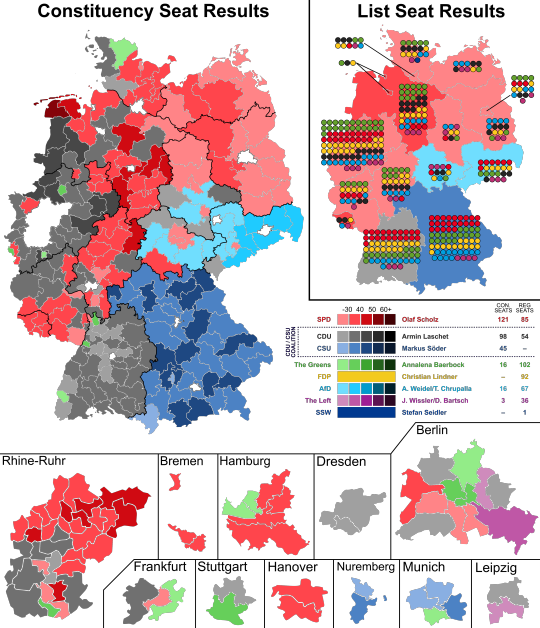
The map depicts the results of the 2021 federal election.
Political parties
Germany has a multi-party system with six main political parties: moderate SPD (center-left), conservative Christlich Demokratische Union Deutschlands (CDU, Christian Democatic Union of Germany) (center-right), social liberal The Greens (center-left), liberal FDP (center-right), far-right Alternative für Deutschland (AfD, Alternative for Germany) (right-wing), and progressive Die Linke (left-wing), in order of votes received. The CDU has a regional counterpart that only operates in Bavaria, the Christlich-Soziale Union in Bayern (CSU, Christian Social Union in Bavaria). It is more conservative in social matters than the CDU.







3 notes
·
View notes
Text
The Free State of Bavaria has always thought of itself as different, before Germany became one in 1871 and before it became one (again) in 1990. The stiff upper lip of the Protestant north is not for the Bavarians; instead, they indulge themselves proudly in folkloric dress, exuberant beer drinking, and a defiant traditionalism.
And yet, as Germany’s largest state (by area) goes to the polls on Oct. 8, it presents a political picture that is both distinctive from the rest of the country and also similar. Bavarians are wrestling with the rise of the radical right and fretting about the same issues that the rest of Europe is grappling with—migration, climate, economic malaise, and wider issues of identity.
Throw into the mix a recent controversy over the state’s deputy premier and the discovery of his musings about Nazi concentration camps when he was a teenager, and you have a combustible mix.
Scroll back a few decades. The Christian Social Union (CSU) was founded, along with the other three people’s parties, shortly after Germany’s surrender to the Allies. The CSU exists only in this one state, the junior partner to the bigger Christian Democratic Union (CDU), which has run Germany for much of the postwar era. The Americans, who occupied and ran the southern sector of the country in the immediate Cold War years, accepted Bavarians’ desire for a more a more socially conservative party, but one they insisted would adhere strictly to the new democratic norms.
Since then, Bavarian politics has been dominated by the CSU, and much of that time by one man: Franz Josef Strauss. A major player across German politics, in 1956, Strauss declared: “No legitimate political party can be to the right of the CSU.” This had a double meaning: Germany cannot countenance extremism, and the CSU (and the CDU) must do whatever it takes to absorb those who might contemplate voting for the fringes.
Now, in Bavaria and all over Germany, this has been shattered. A number of groups to the right of the established parties (and one on the left) are threatening the consensus on which the Federal Republic was built. The danger is most acute in the former communist East Germany, where the Alternative für Deutschland (AfD) is running rampant. Elections scheduled in three of the eastern Länder (regions) in a year’s time could see the AfD emerge as the largest party there. This wider trend is likely to be amplified across the continent before that during the June 2024 elections to the European Parliament, which are expected to see a surge in extremist parties.
The first elections in this cycle are in Bavaria (and also in the western region of Hessen). With a population of 13 million, Bavaria would rank as a not-insignificant European state. In terms of gross domestic product, it would have around the sixth- or seventh-strongest economy in the EU. It is a remarkable success story, a once rural and relatively poor region transformed by the postwar economic miracle and the headquarters to some of the world’s most important industrial and automotive companies.
And yet the mood is sour. When leading figures from Berlin visited Bavaria in recent weeks to campaign for their respective parties, they received a reception more hostile than the usual cut-and-thrust of electioneering. The Greens, meanwhile, have been portrayed some of their political opponents as the enemy within—not language that German politics is used to.
The Greens are struggling to recover their standing nationally after a row during the summer over a parliamentary bill to replace oil and gas heaters with models that run on at least 65 percent renewable energy. A watered-down version of the proposal was eventually passed, but the issue, which on one level might sound technical, has become totemic. “Why don’t you deal with migration rather than my boiler room?” is a frequent refrain of protesters.
Bavaria’s incumbent premier, Markus Söder, has used the dispute to put distance between the CSU and the three-party “traffic light” coalition of the Social Democrats, Greens, and the liberal Free Democrats.
The Greens’ unpopularity marks a big change from the last elections in 2018, when some commentators were talking of them as part of the next Bavarian government. (They currently are the senior party in the neighboring state, the equally prosperous Baden-Württemberg, which they run with the CDU.)
Last time around in Bavaria, the Greens recorded a respectable 18 percent of the vote. The CSU dropped to 37 percent, low by the party’s standards, and were required to form a coalition. Instead of opting for the Greens, Söder chose to partner with the Freie Wähler (FW), or Free Voters, a motley right-wing group that found its niche in Bavaria, nearby Saxony, and other parts of the former East Germany. In so doing, Söder was breaking Strauss’s long-held taboo: The FW are not quite AfD, which all the parties refuse to deal with, but it is AfD-lite.
Fast forward to now, and the situation has sharpened further. Latest opinion polls have the CSU dipping yet further to as low as 36 percent, a record low, with the FW forging ahead of the Greens into second place and the Social Democrats languishing behind.
There is still much to play for, and in the German voting system even a small variation between poll predictions and actual results can make a big difference in the final makeup of governing coalitions. Yet whatever the final outcome, this campaign will be remembered as synonymous with one politician, a man few people outside Bavaria had previously heard of, and the scandal that was—and wasn’t.
At the end of August, one of Germany’s biggest newspapers, the Munich-based Süddeutsche Zeitung, published a dramatic investigation entitled “The Auschwitz Pamphlet.” It alleged that a typewritten note found in a school satchel more than thirty years ago declared a competition to find “traitors to the fatherland,” with the winner receiving a shot in the neck or a “free flight through the chimneys of Auschwitz.”
The 17-year-old pupil said to have written the pamphlet was none other than Hubert Aiwanger, Bavaria’s deputy premier and economy minister, and the leader of the FW.
Aiwanger tried initially to brush off the accusations, with his brother coming to his aid and saying that he had been the culprit. When that didn’t wash, Aiwanger himself admitted to it, while dismissing the incident as youthful indiscretion. Then, taking a leaf out of the playbook of former U.S. President Donald Trump, he played up the controversy, presenting himself as the target of an organized media campaign by the “liberal elite.”
He is by no means the first German politician to be found out with a dubious past. What is new in this affair is Aiwanger’s defiance, his refusal to show contrition, and the public’s response. Just as Trump’s ratings seem to rise every time he is indicted by the U.S. courts, Aiwanger and his party have only seen their popularity grow.
This posed an acute dilemma for Söder. For the CSU and CDU, this could not have come at a worse time. The CDU may be the highest performing party nationally, but given the problems facing Chancellor Olaf Scholz and his coalition, it should be faring considerably better.
With thoughts starting to turn to the next general election, expected to be held in October 2025 at the latest, the CDU is beginning to wonder if it has the right person at the helm. Friedrich Merz, a longtime sharp operator, finally achieved his goal when he succeeded at taking the helm of the party following Angela Merkel’s retirement in 2021. He is respected rather than liked and has a tendency to shoot from the hip, but he will be hard to dislodge.
If the CDU does make a change and moves back more toward the center, it could opt for the younger and—at the national level—relatively untried Hendrick Wüst, the premier of Germany’s most populous state, North Rhine-Westphalia. The other big beast in the mix is Söder himself, who is not one to hold back if he sniffs a chance.
These forthcoming elections in Bavaria will be a midterm test for him, for his party, and for the resilience of the politics of the mainstream, which is facing one of its sternest tests since the advent of the Federal Republic.
3 notes
·
View notes
Text
So I was looking for pictures of archduchess Sophie in Wikimedia, as one does, and I stumbled with the portrait in the left. This portrait immediately seemed VERY familiar to me - and it didn't took me long to realize why: it's a different version of a portrait of Ludovika of Bavaria, Empress Elisabeth's mother.
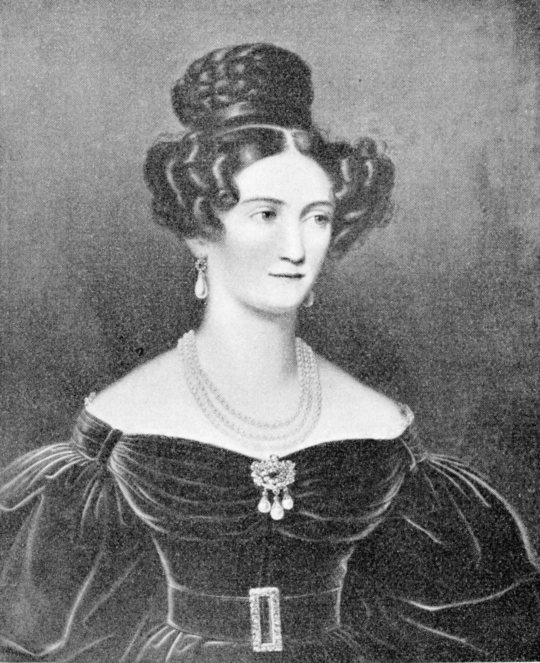

Although it's in Sophie's Wikimedia page, this portrait was first posted in weber-gesamtausgabe.de, a website about composer Carl Maria von Weber, as a portrait Princess Maria Luisa Carlota of Bourbon-Parma, daughter of King Luis I of Etruria and Infanta Maria Luisa of Spain, who later married Prince Maximilian of Saxony.
The first thing that I thought is that the Weber website simply misidentified the sitter, but I decided to keep looking further. The website sourced the image as coming from Fürsten-Bildnisse aus dem Hause Wettin, by Jean Louis Sponsel, published in Dresden in 1906. I crossed my fingers, googled it and guess what: the whole book is available for free in the Saxon State and University Library.
It didn't took me long to find the picture in question:
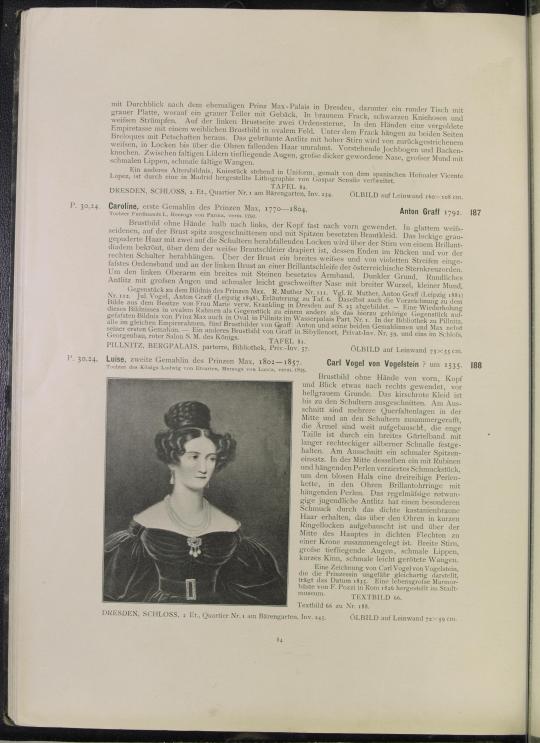
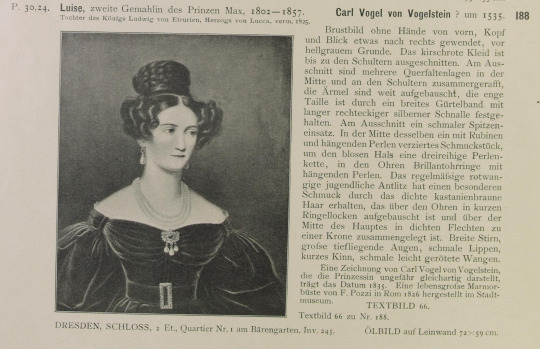
The text reads as it follows:
Luise, second wife of Prince Max, 1802-1857. daughter of King Louis of Etruria, Duke of Lucca, married, 1825.
Carl Vogel von Vogelstein? c. 1535 [a typo, the author likely meant 1835]
Half-length portrait without hands from the front, head and gaze turned a little to the right, in front of a light grey background. The cherry-red dress is cut to the shoulders. The neckline is gathered in several cross folds in the middle and at the shoulders, the sleeves are widely puffed out, the narrow waist is held in place by a wide belt band with a long rectangular silver buckle. A narrow lace insert at the neckline. In the centre a jewel decorated with rubies and hanging pearls, around the bare neck a three-row pearl necklace, in the ears diamond earrings with hanging pearls. The regular, red-cheeked, youthful face has been given a special adornment by the thick chestnut-brown hair, which is puffed up above the ears in short ringlets and over the middle of the head is laid together in dense braids to form a crown. Broad forehead, large deep-set eyes, narrow lips, short chin, narrow slightly flushed cheeks.
A drawing by Carl Vogel von Vogelstein depicting the princess in approximately the same manner bears the date 1835. A life-size marble bust by F. Pozzi made in Rome in 1826 in the City Museum.
The colors described match with the Ludovika portrait, so to me at least there is almost no doubt of it being the same. But that left with a bigger question: who is the sitter then?
Short answer, I have no idea. I'm no art historian, and I can't go to the Schloss Dresden to check if they still have this portrait somewhere in their collection. What I can do is speculate with the little information that I have, so I decided to do just that.
Here we have a close up of an engraving of Luisa Carlota with no date (left), the Dresden portrait with the mysterious sitter (middle), and a close up of a painting of Luisa Carlota by Vogel - likely the one referenced in Sponsel's book, I couldn't find any other -, dated 1834 (right):

And here we have a close up of a miniature of Ludovika (left), the Dresden portrait (middle), and a close up of Ludovika's engagement portrait by Stieler (right):
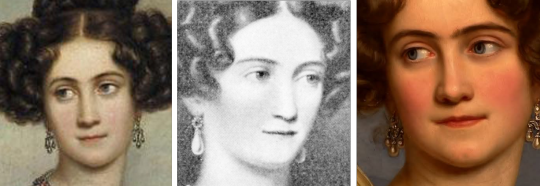
Perhaps I'm being biased, but I can see a strong resemblance between the Dresden portrait and the two portraits of Ludovika. I can't really see much similarities with the two images of Luisa (though to be fair, the engraving and the Vogel portrait don't look super similar either, and both are confirmed pictures of her). To me, the detail that makes me think that the Dresden portrait is indeed Ludovika is the eye color. Luisa seems to have brown eyes in the Vogel portrait. Ludovika has blue eyes in both of her portraits. The same eye color that the woman in the red dress identified as Ludovika has - which is likely also the eye color of the Dresden portrait's sitter.
Lastly, here is a picture of the portrait with the frame, in which the inscription identifying Ludovika can be seen:
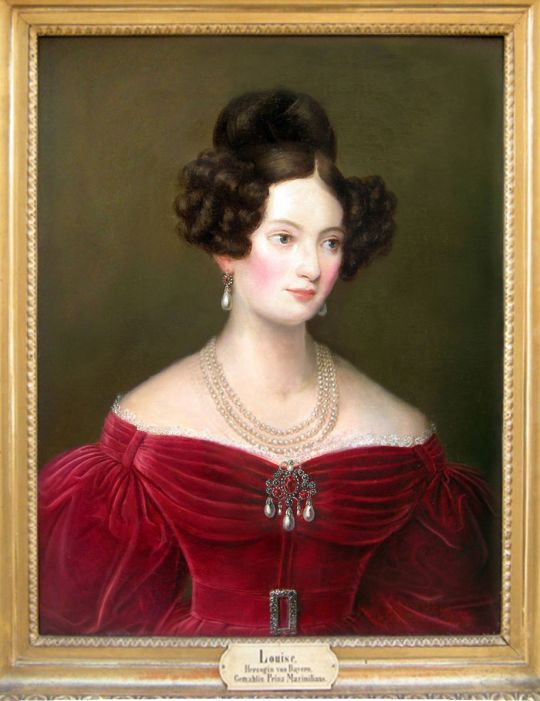
This is all I could find on the subject. If I learn anything more I'll tell you!
#i am once again trying to identify a portrait#ludovika of bavaria duchess in bavaria#luisa carlota of bourbon-parma princess of saxony#art
19 notes
·
View notes